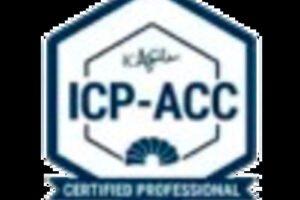The integration of emerging technologies in healthcare IT is revolutionizing predictive analytics applications. These advancements enable healthcare providers to predict patient outcomes, optimize treatments, and reduce costs, enhancing overall efficiency in the medical field. Here, we explore some of the most impactful technologies driving this transformation.
1. Artificial Intelligence (AI)
Artificial Intelligence is at the forefront of predictive analytics in healthcare. AI algorithms analyze vast amounts of patient data to identify patterns, predict diseases, and recommend personalized treatment plans. Machine learning models, a subset of AI, continuously improve their accuracy as they process more data.
Key Applications:
- Predicting disease outbreaks
- Identifying high-risk patients
- Personalizing treatment plans
Example: AI-powered tools like IBM Watson Health help doctors predict patient outcomes and make informed decisions based on large datasets.
2. Big Data Analytics
Big data analytics involves processing and analyzing massive datasets from various sources, including electronic health records (EHRs), wearable devices, and patient registries. This technology provides valuable insights into patient behaviors, disease trends, and healthcare system inefficiencies.
Key Applications:
- Analyzing patient history to forecast future health issues
- Monitoring population health trends
- Enhancing operational efficiency in hospitals
Example: Big data platforms such as Hadoop and Spark are widely used to process and analyze healthcare data efficiently.
3. Internet of Things (IoT)
The Internet of Things (IoT) in healthcare includes connected devices like smartwatches, fitness trackers, and medical sensors that collect real-time patient data. This information is crucial for predictive analytics applications, helping doctors monitor and predict patient health issues before they escalate.
Key Applications:
- Remote patient monitoring
- Real-time health tracking
- Predicting emergencies like heart attacks or seizures
Example: Devices like Fitbit and Apple Watch provide real-time health data that can be integrated into predictive models.
4. Blockchain Technology
Blockchain ensures secure and transparent data sharing in healthcare. By providing an immutable ledger of patient information, it enables accurate and trustworthy data for predictive analytics applications. Blockchain also enhances data interoperability across different healthcare systems.
Key Applications:
- Ensuring data security in predictive analytics
- Facilitating seamless data exchange between providers
- Verifying data accuracy for analysis
Example: Companies like MediLedger are exploring blockchain for secure healthcare data management.
5. Cloud Computing
Cloud computing provides scalable storage and processing power, making it easier for healthcare organizations to manage and analyze large datasets. Cloud platforms support the deployment of predictive analytics tools, enabling real-time insights and decision-making.
Key Applications:
- Hosting predictive analytics tools
- Enabling collaborative research on shared datasets
- Providing cost-effective solutions for data storage and analysis
Example: Platforms like Microsoft Azure and AWS offer healthcare-specific cloud solutions for predictive analytics.
6. Natural Language Processing (NLP)
NLP technology allows healthcare systems to analyze unstructured data, such as doctors’ notes, patient reviews, and medical literature. By extracting valuable information, NLP enhances predictive analytics capabilities.
Key Applications:
- Analyzing clinical notes for insights
- Processing patient feedback for trend analysis
- Extracting relevant information from medical literature
Example: Tools like Google’s BERT are used for advanced text analysis in healthcare applications.
Benefits of Predictive Analytics in Healthcare
The adoption of these emerging technologies offers several benefits:
- Early Disease Detection: Predictive models help identify diseases at an early stage, improving patient outcomes.
- Cost Reduction: By optimizing treatment plans and resource allocation, predictive analytics reduces healthcare costs.
- Improved Patient Care: Personalized treatment recommendations enhance the quality of care.
- Operational Efficiency: Hospitals can predict patient admission rates and allocate resources effectively.
Challenges and Future Directions
Despite the benefits, challenges remain in implementing predictive analytics in healthcare:
- Data Privacy: Ensuring patient data security is critical.
- Interoperability: Integrating data from diverse sources requires standardization.
- Accuracy: Predictive models must be regularly updated to maintain reliability.
Future advancements in AI, IoT, and blockchain promise to address these challenges and further enhance predictive analytics capabilities. The integration of these technologies will continue to reshape healthcare, making it more proactive, efficient, and patient-centered.
Conclusion
Emerging technologies in healthcare IT are transforming predictive analytics applications, offering immense potential to improve patient outcomes and streamline operations. From AI and big data to IoT and blockchain, these innovations are laying the foundation for a smarter, data-driven healthcare system. By embracing these technologies, healthcare providers can deliver better care while optimizing resources and reducing costs.




